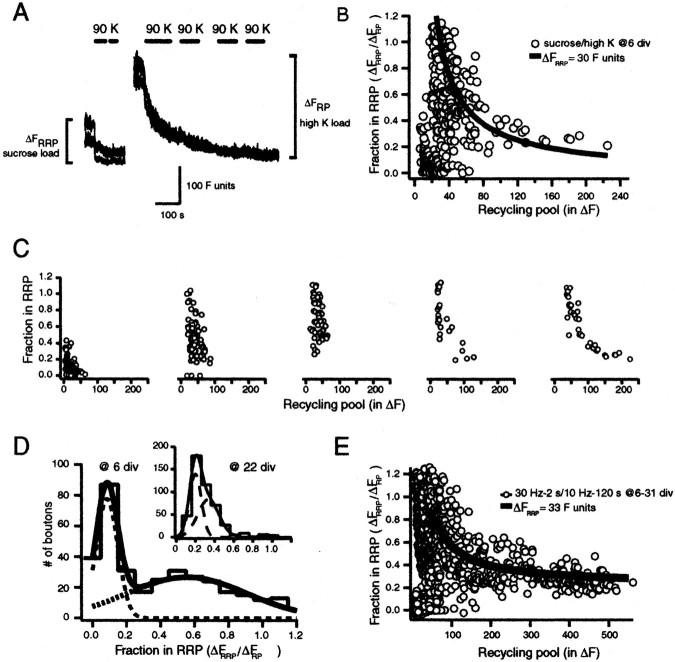Fig. 5.
Fraction of vesicles in RRP declines with increasing recycling pool size. A, Sequential loading and destaining of three boutons illustrating the protocol that was used in these experiments. Background fluorescence was subtracted from each trace. B, Plot of the ratio of the size of the RRP to RP with respect to increasing size of the RP at 6 DIV (n = 5; 362 boutons). RRP was stained with a 30 sec application of +500 mOsm solution; the size of the RP was determined with 90 sec high K+ loading in the second round. The distribution of RRP/RP values for RP > 40 U could be fit with a hyperbolic function by minimizing the least square error (ΔFRRP = 30 U). According to our estimations this fluorescence value corresponds to nine vesicles.C, RRP/RP distributions from five individual experiments that make up the plot in B. Note the clustered pattern of pool organization in each experiment. D, Distribution of RRP to RP ratios can be fit with two distinct Gaussian peaks. First is a sharp peak ∼0.08, which significantly overlaps with baseline noise levels in these experiments; therefore, it presumably corresponds to sucrose-unresponsive boutons. The second peak has a wide spread ∼0.60. Inset, Nearly unimodal distribution of RRP to RP ratios from a set of mature boutons at 22 DIV. Gaussian peaks are centered on 0.19 and 0.33, respectively. E, Loading RRP and RP with AP-dependent stimulations yielded similar results. The relative fraction of vesicles stained with FM2-10 by 30 Hz, 2 sec stimulation was significantly larger for small boutons (ΔFRP < 200 U). The distribution of RRP/RP values for RP > 40 U was fit with a hyperbolic function, ΔFRRP/ΔFRP= (33/ ΔFRRP) + 0.22, by minimizing least square error.

